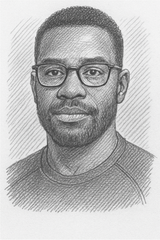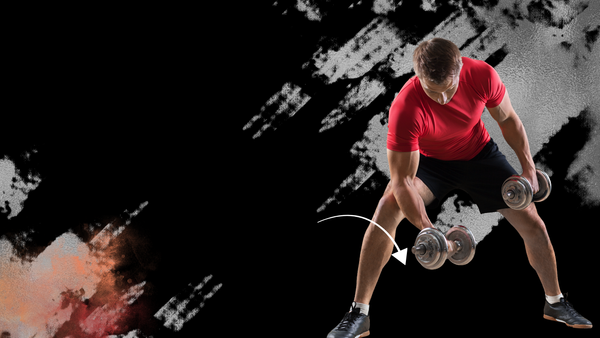Explore the Muscle Groups in Your Arms
Discover the essential muscle groups in arms, including biceps, triceps, and forearm muscles. Learn how these muscles work together and exercises to strengthen them effectively

Did you know your arms have 24 muscles? They work together to help you move every day. These muscles are more complex than you might think, showing off the body's strength and skill.
Learning about arm muscles is more than just getting fit. Each muscle is key to how well your upper body works. They help you do simple tasks like carrying groceries or complex sports moves. The arm is a true marvel, designed for flexibility, power, and control.
Discovering these muscle groups can make your workouts better. Whether you're into sports or just like staying fit, knowing about arm muscle anatomy can change how you train.
Key Takeaways
- Arms contain 24 total muscles with complex interconnections
- Muscle groups enable diverse movement capabilities
- Understanding arm muscles improves training effectiveness
- Arm muscles contribute significantly to overall body strength
- Targeted muscle group training enhances performance
Understanding Arm Muscle Anatomy Basics
Arm muscle anatomy is a complex system that lets us move and be strong. Skeletal muscles are key to how our arms work. They give us the power and precision for daily tasks.
The human arm has many muscle groups that work together. These groups are arranged to make movements efficient and effective.
Major Muscle Compartments
Arm muscles are split into two main parts:
- Anterior Compartment: Has three main muscles
- Biceps brachii
- Coracobrachialis
- Brachialis
- Posterior Compartment: Mainly includes
- Triceps brachii
- Anconeus (supporting muscle)
Role of Skeletal Muscles
Skeletal muscles are the ones we can control. They help us move by creating force. These muscles connect to bones via tendons, making movement possible.
| Muscle Group | Primary Function | Nerve Innervation |
|---|---|---|
| Biceps Brachii | Elbow Flexion | Musculocutaneous Nerve (C5-C6) |
| Triceps Brachii | Elbow Extension | Radial Nerve (C6-C8) |
| Brachialis | Forearm Flexion | Musculocutaneous Nerve |
Muscle Fiber Structure
Muscle fibers are the tiny parts of skeletal muscles. They affect how well muscles work and last. There are different types of fibers:
- Type I Fibers: Slow, but last long
- Type IIA Fibers: Medium speed and strength
- Type IIB Fibers: Fast, lots of power
Knowing about muscle fibers helps athletes and fitness fans improve their workouts.
Primary Muscle Groups in Arms
Your arms are made up of many muscle groups that work together. They help you move in many ways. Knowing these muscle groups is key for building strength and avoiding injuries.
The upper arm has four main muscles that are vital for movement and strength:
- Biceps brachii - a two-headed muscle in the front
- Brachialis - the strongest muscle for bending the elbow
- Coracobrachialis - helps pull the upper arm inward
- Triceps brachii - the main muscle in the back
Deltoids are another important group. They help with shoulder movement and give your upper arm shape. These muscles are key for lifting and overhead movements.
Forearm muscles are also vital, with 19 muscles in two main groups:
- Flexor muscles: Help with gripping and bending
- Flexor carpi ulnaris
- Palmaris longus
- Flexor carpi radialis
- Extensor muscles: Allow for wrist and finger extension
- Brachioradialis
- Extensor digitorum
Each muscle group has its own role in arm function. Biceps control bending, triceps manage straightening, and forearm muscles help with hand movements.
Biceps and Their Functions
The biceps muscle is key to arm strength and movement. It's in the front of the upper arm. The biceps brachii muscle is vital for arm workouts and daily tasks.
The biceps has two heads: the short and long head. These work together for complex arm movements.
Anatomical Characteristics of Biceps
The biceps muscle has unique features:
- Crosses two joints: elbow and shoulder
- Approximately 9 cm long tendon
- 30% of adults exhibit variations in muscle origin
- Located among four primary upper arm muscles
Supination and Flexion Movements
Biceps are great at two main movements: supination and flexion. Supination rotates the forearm. Flexion bends the elbow. These are key for lifting and turning doorknobs.
Common Bicep Exercises
Good arm workouts for biceps include:
- Barbell curls
- Hammer curls
- Concentration curls
- Preacher curls
| Exercise | Primary Focus | Difficulty Level |
|---|---|---|
| Barbell Curls | Overall Bicep Mass | Intermediate |
| Hammer Curls | Brachialis Muscle | Beginner |
| Concentration Curls | Peak Bicep Contraction | Advanced |
Learning these exercises can make your biceps strong and defined. It also boosts your arm strength and function.
Triceps: The Three-Headed Muscle
The triceps brachii is a powerful muscle group on the back of your upper arm. It's the largest muscle in the arm muscles region. This muscle is named for its three heads, which make it great for arm movement and power.
The three heads of the triceps work together to provide critical functions in arm mechanics:
- Long head: Originates from the infraglenoid tubercle of the scapula
- Lateral head: Stems from the posterior surface of the humerus
- Medial head: Connects to the posterior surface of the humerus
The triceps is the only muscle in the posterior compartment of the arm. It's mainly innervated by the radial nerve. The main action of this muscle group is forearm extension, which is key for many upper body movements.
Athletes and fitness enthusiasts should focus on triceps development. The long head not only helps in elbow extension but also in arm adduction at the shoulder joint. For the best arm strength, exercises that work all three heads are recommended.
Medical research shows some interesting triceps facts. In about 14% of people, the long head gets innervation from the axillary nerve. Ruptures of this muscle are rare and often linked to anabolic steroid use.
Forearm Muscles and Their Importance
The human forearm is made up of many muscles. It has 20 muscles that help us move our hands and wrists. These muscles are key for gripping and controlling our arms.
Knowing how these muscles work is important for athletes and those who work out. They help us move our hands in many ways. This is thanks to two main groups of muscles working together.
Flexor Muscle Group Insights
The flexor muscles help us bend our wrists and fingers. The main muscles in this group are:
- Flexor carpi ulnaris
- Flexor carpi radialis
- Palmaris longus (absent in approximately 15% of people)
- Flexor digitorum superficialis
Extensor Muscle Group Dynamics
Extensor muscles do the opposite by straightening our wrists and fingers. They are vital for our grip strength and arm movement.
| Muscle Group | Primary Function | Key Muscles |
|---|---|---|
| Flexors | Wrist and finger bending | Flexor digitorum superficialis |
| Extensors | Wrist and finger straightening | Extensor digitorum |
Developing Superior Grip Strength
Working on forearm muscles can make our grip stronger. Exercises like wrist curls and farmer's walks help. Regular practice can boost hand strength and avoid muscle injuries.
Understanding Muscle Groups in Arms for Optimal Training
Creating effective arm workouts needs a smart plan to target muscle groups. Your upper body muscles are key to strength and fitness. Trainers say knowing the muscle anatomy is vital for balanced and powerful training programs.
The arms have three main muscle groups: biceps, triceps, and forearms. Each needs special focus in workouts. Training these groups twice a week boosts muscle growth and strength.
Choosing the right workout splits is important. A 4-day upper/lower split works each group twice, for full development. Experts recommend starting with bigger muscles and using compound exercises for better results.
Don't forget about recovery in arm training. Resting at least 24 hours between sessions helps avoid overtraining and aids in muscle repair. Knowing how to train arms well leads to better muscle growth and upper body strength.
FAQ
What are the main muscle groups in the arms?
The main muscles in the arms are the biceps, triceps, deltoids, and forearm muscles. Each group is key for moving the arm, building strength, and helping the upper body work well.
How do biceps and triceps work together?
Biceps and triceps are opposite muscles. Biceps bend the elbow, while triceps straighten it. This teamwork makes arm movements smooth and controlled.
Why are forearm muscles important in fitness?
Forearm muscles are vital for grip strength. They help in many exercises and sports, like weightlifting and tennis. Strong forearms are essential for hand and arm control.
How can I effectively target different arm muscle groups?
To target arm muscles well, do a mix of exercises. Include big movements like pull-ups and push-ups. Also, do specific exercises like bicep curls and tricep extensions for full arm development.
What is the difference between the short and long heads of the biceps?
The biceps has two heads: the short and long heads. They start from different points on the shoulder blade. Both help bend the arm and rotate it, but in different ways.
How important is rest in muscle development?
Rest is very important for muscle growth and recovery. Muscles fix and get stronger when at rest. It's best to rest for 48-72 hours after hard arm workouts to avoid overtraining and help muscles grow.
Can understanding arm muscle anatomy improve my workout routine?
Yes! Knowing arm muscle anatomy helps make workouts better. It lets you focus on specific muscles for stronger arms and avoids muscle imbalances.
What role do deltoid muscles play in arm movement?
Deltoid muscles are in the shoulder and are key for arm movement and stability. They help lift the arm away from the body, rotate it, and support during exercises and daily tasks.
👉 Join the Active Man Community
Get expert tips, workout guides, nutrition hacks, and the latest trends delivered straight to your inbox every week. No spam — just actionable insights to help you live stronger, healthier, and better.





